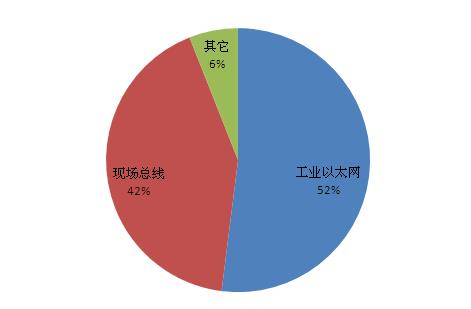Dongguan Metalwork Technology Co., LTD. , https://www.diecast-pro.com
Data shows that the number of installed industrial Ethernet nodes increased from 46% of market share in 2016 to 52% in 2017, while fieldbus dropped from 48% to 42%. Among them, EtherNet/IP is the most widely installed industrial Ethernet, its market share accounts for 15%, followed by PROFINET and PROFIBUS accounted for 12%, while wireless technology maintains a market share of 6%. 
The intelligent transformation of the manufacturing industry requires high-performance networks to support the integration of IoT solutions and plant equipment to promote the use of industrial Ethernet. Industrial Ethernet has been in a transitional phase for a long time in the past. Now, from the point of installing the number of nodes, Industrial Ethernet has replaced the field bus.
According to the HMS report, although the proportion of field buses in the market was lost to Industrial Ethernet, the number of fieldbus installations in 2017 increased, and its growth rate increased from 4% in 2016 to 6%, indicating that the industrial networking market is in The stage of rapid development. However, network vendors believe that the number of fieldbus installations will steadily decline in the coming years.
In 2017, the number of industrial wireless communication installation nodes increased by 32% compared to 2016. Although wireless technology continues to expand, its market share is relatively small, and it eventually maintains a market share of 6%. Among them, WLAN is the most popular wireless technology, followed by Bluetooth. Wireless communication technology can reduce cabling and facilitate device connectivity and control. It is increasingly being used by machine builders and system integrators to implement innovative solutions, including solutions for connection monitoring via tablet PCs or smartphones.
The analysis finds that Profinet and EtherNet/IP are the main network protocols in Europe and the Middle East, where Profibus is widely used, and its networks including EtherCat, Modbus TCP, and Ethernet Powerlink are also popular, while the U.S. market is more obvious to EtherNet/ IP development; In the Asian market, Profinet, EtherNet/IP, Profibus, EtherCat, Modbus and CC-Link are all widely used.
Why manufacturers favor Industrial Ethernet?
Industrial Ethernet is in fact the application of Ethernet in the industry. Due to the harsh on-site environment, equipment connections often require more robust connectors and cables, and one of the most important is certainty. In order to achieve better certainty, Industrial Ethernet uses a special protocol. At present, the more popular industrial Ethernet protocols are PROFINET, EtherNet/IP, EtherCAT, and POWERLINK.
Industrial Ethernet usually has data transmission rates ranging from 10 Mbit/s to 1 Gb/s, of which 100 Mbit/s is the most popular speed in industrial Ethernet applications. Industrial Ethernet requires some additional considerations, not the Ethernet system used in the office. For example, the user needs to monitor in real time over the network the different temperatures, vibrations, noises, and other parameters of the production equipment in the factory.
Industrial Ethernet protocols such as PROFINET and EtherCAT are modified from the traditional Ethernet standards to not only ensure the correct transmission and reception of manufacturing device data, but also to send and receive instructions on time when the system needs to perform certain operations. For example, in the automated filling production process, filling data is sent via the network to ensure that the bottle filling is performed as expected, an automated report is generated in real time, and when the bottle is full, an order to stop the filling is issued on the network.
If data loss or delay between devices in an industrial environment can cause disasters, the real-time nature and certainty of industrial Ethernet networks are very important. The industrial environment must ensure real-time awareness of the state of automated production processes and enable the completion of plant process requirements in harsh environments.
Edge Automation and IIoT Opportunities <br> With the advent of deterministic industrial Ethernet protocols and zero-fault redundancy protocols, some industry suppliers have proposed the development of sensors based on Industrial Ethernet EtherNet/IP connections, but others have expressed the need not to Uses an Ethernet-enabled sensor because IO-Link, HART, or WirelessHART can connect sensors and switch devices into Industrial Ethernet. Some process industry suppliers have developed potential new standards for connecting sensors to Industrial Ethernet via fieldbus.
In the past, many people in the automation industry insisted that Industrial Ethernet would not extend to sensors, instrumentation, and inspection equipment. However, today's industry 4.0 era has come. The Internet of Things solution has further advanced the intelligent development of edge devices. Industrial Ethernet terminal devices, including sensors and I/O drivers, will play a key role in future connectivity business strategies. In order to expand the analysis capabilities of the device, Industrial Ethernet must be extended to the last device in the automation chain: sensors and I/O.
Equipment managers want to use plant-level information to make business decisions to a greater degree, so they turn their attention to intelligent products like sensors and I/O. The ability to import data into cloud applications further facilitates the need for end-devices with large data throughput and Ethernet support that exceed the capabilities of most dedicated legacy automation networks.
Industrial Ethernet equipment meets the needs of IIoT and Industry 4.0, such as reducing machine downtime and increasing production flexibility. Industrial Ethernet and wireless will be the main driving force for these goals.
With the rapid evolution of the Industry 4.0 model, device interconnection becomes more and more important. Numerous machine connection requirements at the production site have contributed to the rise of the Industrial Ethernet market. According to the latest results of the annual survey of the industrial IoT market by HMS of Swedish Industrial Networks Ltd., the Ethernet installation node for factory automation in 2017 surpassed the traditional fieldbus for the first time.